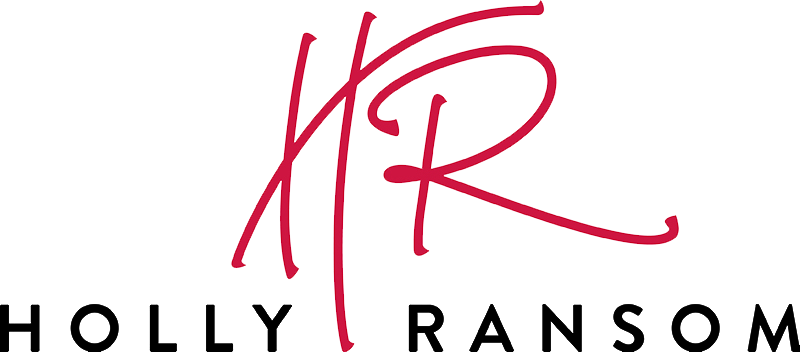Forget Safe Goals—Here’s Why Bold Is Better

Happy New Year, and welcome to 2025! 🎉 I hope your holiday season was filled with rest, joy, and maybe just a little overindulgence. As the calendar resets, so does the chatter about goals—Q1 (or 2 or 3 depending on your financial year) targets, personal resolutions, five-year plans… the list goes on!
As you embark on whatever your version of the above is, here’s my question to you:
What if this year you took the limits off your goal-setting and aimed much higher?
This idea first hit me years ago, thanks to a story a mentor shared. They’d started their career at a big FMCG company, where they were scorecarded within an inch of their life and hitting every KPI was the expectation. Goals were precise, expectations were clear, and anything less than 100% wasn’t an option.
Fast-forward to their first performance review at Google. While they’d had a good year, they’d only hit about 80% of their targets, so they walked in feeling like they were on the back foot, ready to defend themselves. Expecting criticism, they were stunned when their manager said:
“If you’re hitting more than 60% of your goals, you’ve not been ambitious enough.”
How often do we write goals that feel comfortable, that we know we can achieve? Goals that are like ticking items off a “To Done” list, offering the immediate satisfaction of progress but little room for true growth? While there’s value in building momentum, too much comfort risks keeping us small. The real magic lies in stretching ourselves.
What would this year look like if you aimed for goals that scared you a little—and stretched you a lot?
Why Moonshot Thinking?
Let’s talk moonshot thinking. This isn’t rooftop thinking—where the path is clear and the risk is minimal. Moonshot thinking is about dreaming bigger, reaching further, and chasing what feels just out of reach. It’s the kind of thinking that unlocks possibilities you didn’t know existed.
The term comes from one of the most iconic moments in history: when President John F. Kennedy stood in 1961 and declared:
“We choose to go to the moon in this decade and do the other things, not because they are easy, but because they are hard.”
At the time, the goal of landing on the moon was downright laughable. The technology didn’t exist. The U.S. was trailing in the space race. But Kennedy’s moonshot wasn’t about space; it was about daring to rethink what was possible, sparking innovation, and rallying people around something bigger than themselves.
Why Leaders Need Moonshot Thinking
In leadership, it’s easy to stick to incremental progress—hitting targets, refining processes, solving the obvious problems. But moonshot thinking challenges us to look beyond the horizon and ask: What could we achieve if we dared to think bigger?
Here’s why it matters:
- It ignites passion: Bold visions rally people around something larger than themselves.
- It sparks innovation: Audacious goals force us to think differently and abandon “business as usual.”
- It builds resilience: Even when moonshots don’t fully land, the momentum and learning they create drive lasting impact.
I’ve seen firsthand how moonshot thinking can transform a team’s mindset. With my own team, we’ve embraced this approach by asking: ‘What’s the bold move we can make this year that could reshape how we work and the impact we create?’
The results have been remarkable—not just in what we hope to achieve, but in the energy and creativity it has already unlocked along the way.
You might know the famous quote by Norman Vincent Peale – “Shoot for the moon, even if you miss you’ll land amongst the stars.” And honestly, I reckon landing in the stars isn’t a bad place to be, right?
Lessons from Moonshot Thinkers
Reframe Your Goals
That story about my mentor at Google still resonates because it challenges how we think about success. It’s easy to set goals that feel safe and achievable—comfortable milestones that keep us on track. But moonshot thinking invites us to aim higher and reframe how we define success itself.
Take Pixar. They didn’t set out to make animated films—they revolutionised storytelling by blending technical brilliance with emotional depth. Or Slack, whose moonshot wasn’t just to be a messaging app but to reimagine how teams communicate and collaborate. Their bold goals reshaped industries and inspired others to think bigger.
When you reframe your goals to focus on transformation rather than incremental progress, you unlock the potential for innovation and growth far beyond what you thought possible.
Are your goals stretching you, or are they simply comfortable milestones?
Tackle the ‘Impossible’
At last year’s Energy Disruptors conference, we heard Gunnlaugur Erlendsson, founder of ENSO, share his moonshot: revolutionising tyre technology. Most people overlook tyres as a sustainability issue, but Gunnlaugur saw an opportunity to solve a massive pollution problem. By creating ultra-efficient, low-emission tyres for EVs, ENSO is extending EV range, reducing costs, and pushing the EV industry closer to true sustainability.
Companies like Aussie social enterprise Who Gives a Crap didn’t just want to sell toilet paper; they set out to solve the global sanitation crisis by donating 50% of their profits to build toilets in underserved areas. By tackling an ambitious problem with creativity and purpose, they turned an everyday product into a vehicle for transformative change—proving that even small businesses can make a big impact by thinking boldly.
Or, in the case of my favourite chocolate company Tony’s Chocolonely, they didn’t just want to make chocolate; they set out to eliminate slavery and child labour from the cocoa industry entirely. By creating a fully traceable supply chain and making fairness a cornerstone of their brand, they’ve shown how bold, purpose-driven goals can transform an entire industry and inspire others to follow suit.
The lesson? Bold innovation often starts by rethinking problems everyone else ignores.
What’s the challenge in your industry that everyone says is “too hard” to tackle?
Redefine Failure
Failure isn’t the opposite of success—it’s a critical step on the path to innovation. Prince William’s Earthshot Prize embraces this idea by celebrating bold climate solutions, from coral reef restoration to scalable carbon capture. Not every idea will succeed, but the program values ambition and ingenuity as much as results.
Or take Sir James Dyson’s story: 5,126 failed prototypes preceded the revolutionary bagless vacuum cleaner that transformed his industry. Each so-called “failure” was a vital step in refining his design and redefining what was possible.
Leaders, if there’s no room for failure in your strategy, you’re not aiming high enough. Moonshot thinking requires a mindset that views setbacks not as obstacles but as opportunities to learn, iterate, and grow.
How can you encourage your team to see setbacks as stepping stones toward innovation and growth?
Welcome to 2025: Let’s Make It Count
As we step into this new year, I challenge you to think beyond what feels achievable. What’s the bold, audacious challenge that could redefine how you lead, innovate, or solve problems?
Maybe it’s launching that stretch project your team has been hesitating to start. Or perhaps it’s tackling an industry-wide issue no one else has dared to address.
Whatever your moonshot is, remember this: It’s not about guarantees. It’s about having the courage to start, the resilience to adapt, and the vision to lead boldly.
What’s your moonshot for 2025?
